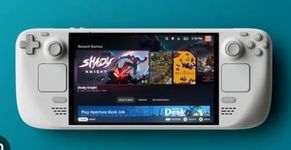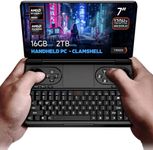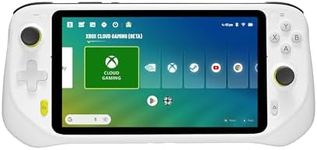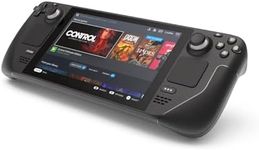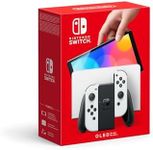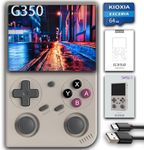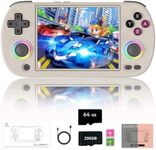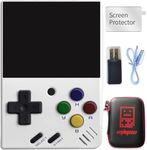Buying Guide for the Best Handheld Gaming Pc
Choosing the right handheld gaming PC can be a thrilling yet daunting task. These devices combine the portability of a handheld console with the power of a gaming PC, making them perfect for gaming on the go. To ensure you pick the best fit for your needs, it's important to understand the key specifications that define these devices. By knowing what each spec means and how it impacts your gaming experience, you can make an informed decision that aligns with your gaming preferences and lifestyle.Processor (CPU)The processor, or CPU, is the brain of your handheld gaming PC. It determines how fast and efficiently your device can run games and applications. CPUs are often measured in GHz and come with multiple cores. Higher GHz and more cores generally mean better performance. For casual gaming, a mid-range CPU should suffice, but for more demanding games, look for a high-end CPU with multiple cores to ensure smooth gameplay.
Graphics Card (GPU)The graphics card, or GPU, is crucial for rendering images, videos, and animations in your games. A powerful GPU ensures that games run smoothly and look great. GPUs are often categorized by their memory (VRAM) and processing power. For basic gaming, a GPU with 2-4GB VRAM might be enough, but for high-end gaming with detailed graphics, look for a GPU with 6GB or more VRAM.
RAMRAM (Random Access Memory) is the short-term memory of your device, allowing it to handle multiple tasks simultaneously. More RAM means better multitasking and smoother performance. For handheld gaming PCs, 8GB of RAM is a good starting point for casual gaming, while 16GB or more is recommended for more intensive gaming and multitasking.
StorageStorage determines how much space you have for games, applications, and other data. Handheld gaming PCs typically come with SSDs (Solid State Drives) which are faster and more reliable than traditional HDDs. Storage is measured in gigabytes (GB) or terabytes (TB). For a decent gaming library, aim for at least 256GB of storage, but if you plan to install many large games, consider 512GB or more.
DisplayThe display is your window into the gaming world. Key factors include screen size, resolution, and refresh rate. A larger screen and higher resolution (like 1080p or higher) provide better visuals, while a higher refresh rate (measured in Hz) ensures smoother motion. For a balance of portability and visual quality, a 7-8 inch screen with 1080p resolution and a 60Hz refresh rate is a good starting point. For more immersive gaming, consider higher resolutions and refresh rates.
Battery LifeBattery life determines how long you can game on the go without needing to recharge. It’s measured in hours and can vary widely based on usage. For casual gaming, a battery life of 4-6 hours might be sufficient, but for extended gaming sessions, look for devices offering 8 hours or more. Keep in mind that higher performance settings and brighter screens can drain the battery faster.
PortabilityPortability is about the size and weight of the device, which affects how easy it is to carry around. Lighter and more compact devices are easier to transport but may have smaller screens and less powerful hardware. Consider how and where you plan to use your handheld gaming PC. If you need something highly portable, look for a lighter device with a smaller screen. If you don’t mind a bit more bulk for better performance, a larger device might be the way to go.
ConnectivityConnectivity options like Wi-Fi, Bluetooth, and USB ports are important for online gaming, connecting peripherals, and transferring data. Ensure the device supports the latest Wi-Fi standards for fast internet speeds and has enough USB ports for your accessories. Bluetooth is useful for connecting wireless controllers and headphones. Consider your connectivity needs based on how you plan to use the device.
Build QualityBuild quality refers to the materials and construction of the device. A well-built handheld gaming PC will be more durable and feel better in your hands. Look for devices with sturdy materials, good ergonomics, and responsive buttons. If you plan to use the device frequently or take it on the go, investing in a well-built device can ensure it withstands regular use and occasional bumps.
